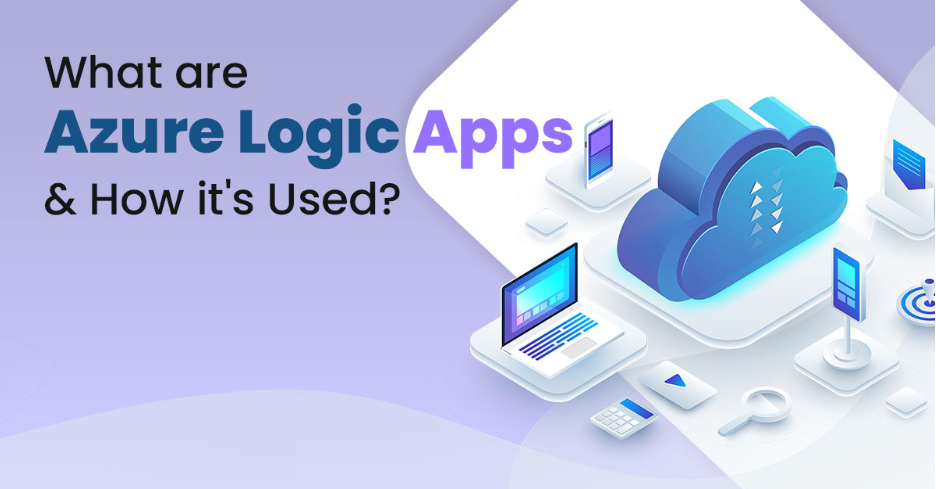We, humans, have created numerous tools, techniques, and methods to improve products, services, and systems. But when it comes to working on multiple tools and techniques it becomes hard to handle different apps. This is where Azure Logic Apps come into the picture. This blog will further explain to you how it comes into the picture.

Let’s explore this idea in more detail, and if you’re eager to understand Azure and develop your expertise, check out this Azure Online Training.
Introduction to Azure Logic Apps
Azure Developers can construct and manage processes that interface with numerous services and systems using the cloud-based service Logic Apps. These workflows, known as Logic Apps, are created using a visual designer and can be scheduled to execute at particular times or triggered by events like a message entering a queue. Without needing to write a lot of code, logic apps allow developers to create connectors and automate business operations.
Azure Logic Apps Functionalities
A cloud-based service that enables users to create, deploy, and manage workflows that integrate with various services and systems. These workflows can be used to automate business processes, integrate with other Azure services, and connect to external services and systems.
Azure Logic Apps have a number more of important functionalities, including
Connectors: A variety of connectors are included with Logic Apps to enable integration with a number of services, including SQL Server, Dynamics 365, and SharePoint. The Logic Apps Connector SDK also allows you to build your own connectors.
Workflow Designer: Logic Apps are defined using a visual workflow designer that enables you to easily and intuitively develop, test, and deploy your workflows.
Custom code integration: Logic Apps support integration with custom code written in various languages such as C#, Java, and JavaScript via the HTTP and webhook triggers, which allows invoking an API endpoint that can contain custom code to implement some specific logic.
Scalability: Logic Apps provide a high degree of scalability and minimal latency when performing complicated activities, enabling you to manage and automate massive business processes.
Security: A variety of security measures, including encryption, access controls, and authentication, are supported by logic apps.
Developers can simply construct and execute processes that interface with numerous systems and services using Azure Logic Apps, a robust tool. It enables businesses to streamline their IT operations and automate intricate business procedures. For use cases like data integration, event-driven processing, business process automation, and more, it is the perfect answer.
Applications of Azure Logic Apps
Azure Logic Apps can be used to build a wide range of integration and automation scenarios, some common examples include
Data Integration: Logic Apps can be used to integrate with various data sources such as SQL Server, SharePoint, and Dynamics 365, allowing you to easily retrieve, update and insert data into these systems.
Workflow Automation: Logic Apps can be used to automate business processes such as approval workflows, document routing, and case management.
Event-Driven Processing: Logic Apps can be triggered by various events such as new messages arriving in a queue, files being created in a storage account, or changes being made to a database table, making it easy to process data in real time.
Data Processing and Integration with Big data Ecosystems: Logic apps can be used to process large amounts of data and can be integrated with big data ecosystems like HDInsight (Hadoop, Spark), Databricks, and more.
API integration: Logic apps can be used to integrate with various APIs and can act as an API management platform, by acting as a central hub for APIs and managing the access and security aspect of the same.
Monitoring and Automation: Logic apps can be used to monitor resources like servers, applications, and services in the Azure environment and perform automated actions like scaling up or down, sending notifications, and more.
Integration with IoT: Logic apps can be used to integrate with various IoT devices and can perform actions like sending notifications, triggering alarms, reporting sensor data, and more.
Email and Office 365 integration: Logic apps can be used to send and receive emails, schedule meetings, and other tasks related to office 365 services like Sharepoint, OneDrive, and more.
Users can create and manage logic apps using the Azure Logic Apps Designer, a visual tool that enables users to create workflows by dragging and dropping various connectors and actions. Logic apps can also be developed using the Azure Logic Apps SDK, which allows developers to create logic apps using code.
Future Scope of Azure Logic Apps
The future scope of Azure Logic Apps looks promising as the demand for integration and automation solutions continues to grow. Here are a few potential areas of growth for Azure Logic Apps:
Increased integration with other Azure services: As more and more businesses adopt Azure, the need for integration between various Azure services will continue to grow. Azure Logic Apps is well-positioned to meet this need by providing a unified platform for integrating different Azure services.
Greater use of Artificial intelligence and Machine Learning: Azure Logic Apps can be used in conjunction with Azure Machine Learning and Azure Cognitive Services to add intelligence to workflows. This can enable more advanced automation and decision-making capabilities.
More use in Internet of Things (IoT) scenarios: Azure Logic Apps can be used to process and analyze data from IoT devices and systems, this can open new opportunities for businesses to gain insights and optimize operations.
Overall, with the increasing demand for integration and automation solutions, Azure Logic Apps is well-positioned to continue to be a popular and powerful tool for businesses of all sizes.
Conclusion
Azure training will helps you to learn Azure Logic Apps which is a powerful and versatile service that enables businesses to automate, integrate, and connect various services and systems. The service has a wide range of use cases, including automating business processes, integrating with other Azure services, connecting to external services and systems, and scheduling and triggering workflows based on specific conditions or events. Overall, Azure Logic Apps is a valuable tool for businesses of all sizes looking to automate and integrate their operations, and its capabilities are likely to continue expanding in the future.



